P&O 180: Curator's Choice - A Firm Favourite
Continuing our series of online articles, commemorating our 180th Anniversary, Senior Curator Susie Cox reveals why P&O Pencillings and has been a firm favourite since it was first published over 125 years ago.
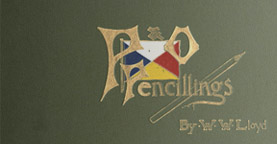
Known to many, P&O Pencillings is W.W. Lloyd’s pictorial and witty account of travelling on board P&O’s Jubilee steamers in the 1890s. Much less well known is this month’s chosen object from our archive collection - an album of 16 original pen and ink drawings for P&O Pencillings. (Ref: AC/07935/00)
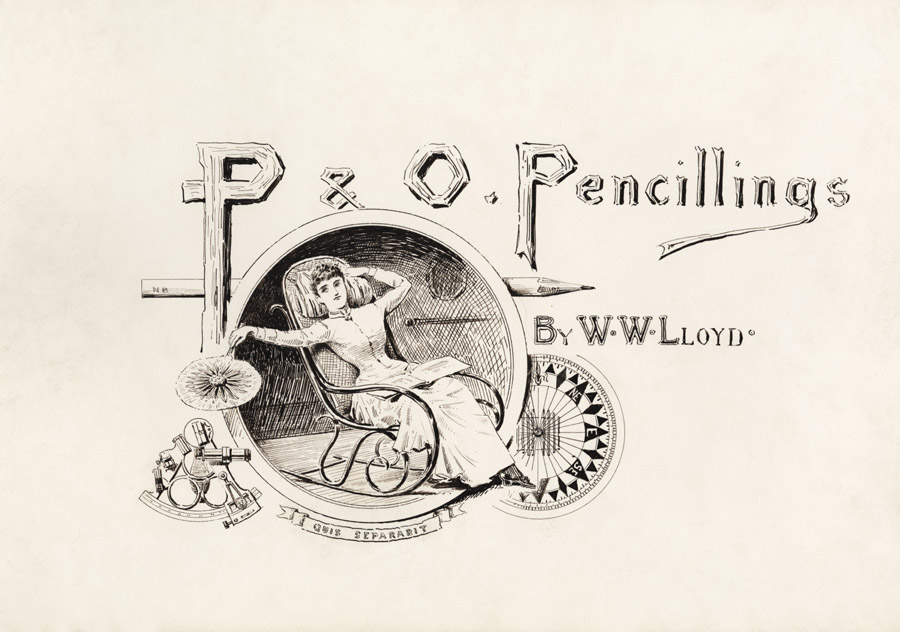
A Detailed Delight
To study Lloyd’s creations up close, in all their detail, is a rare privilege and a real perk of the job.
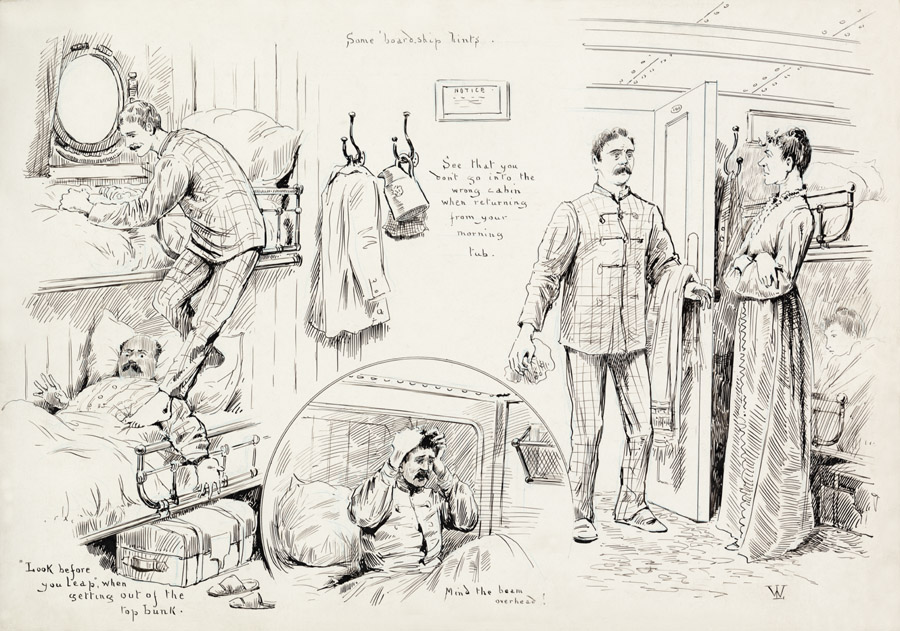
Each page is alive with artistry, observation and, above all, humour.
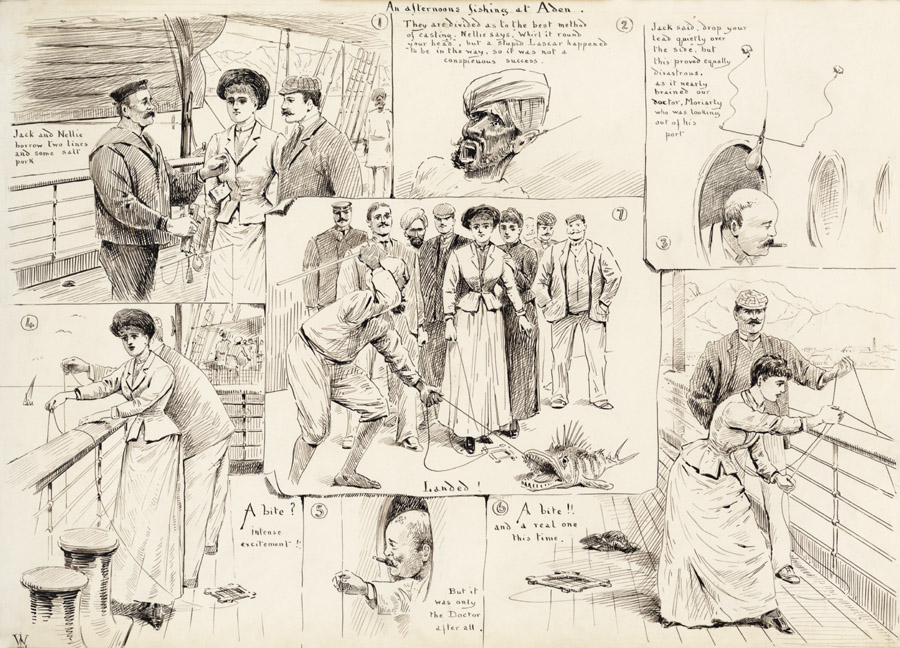
Lloyd cleverly creates the illusion of layered pages to frame individual vignettes.
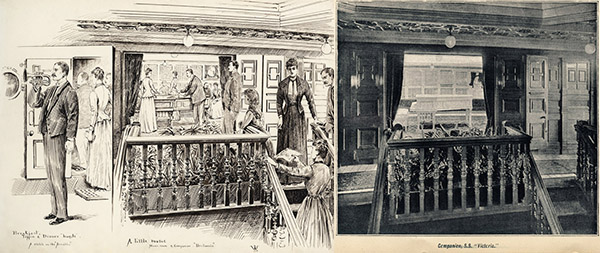
As an accurate record of the period, the passage and the ports en route, the drawings are invaluable.
But it is in Lloyd’s depiction of passengers, observed at close range and rendered with unflinching candour, that the wit and mischief of the artist really captures our imagination.
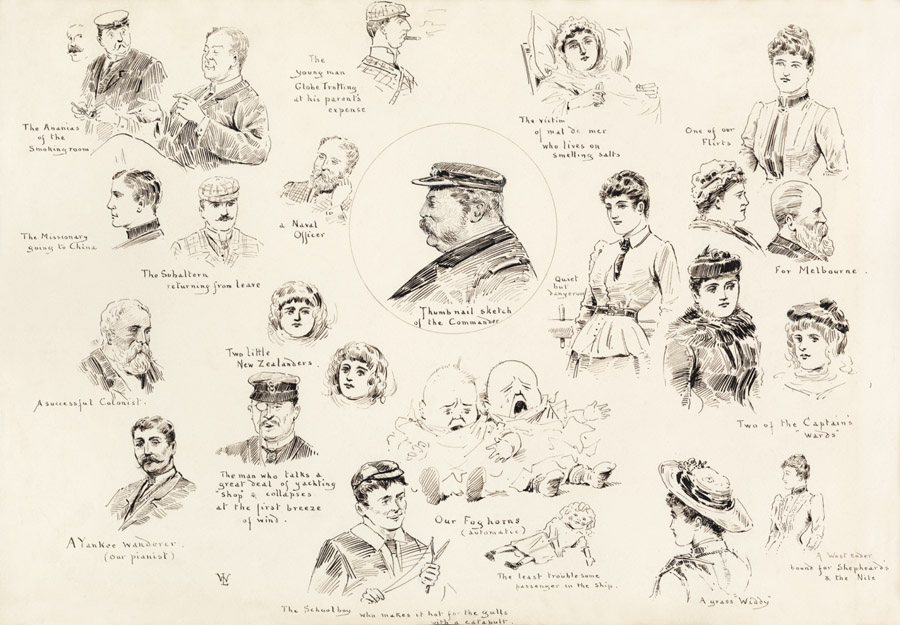
In “Some of our passengers”, we meet the dramatis personae of our passage East of Suez: the military men and civil servants bound for their postings, the flirts of the ‘fishing fleet’ following fast behind, missionaries with a higher purpose in mind, “the young man globe trotting at his parent’s expense” and the commercial ‘colonists’ – successful and suave.

We instantly imagine this microcosm of Victorian society thrown together, captives to their ship and the sea. Little wonder then that Lloyd concludes that a wilted ragdoll is “the least troublesome passenger on board”!
Into Print
At the risk of offending their entire passenger list, the Company published P&O Pencillings in 1891-2.
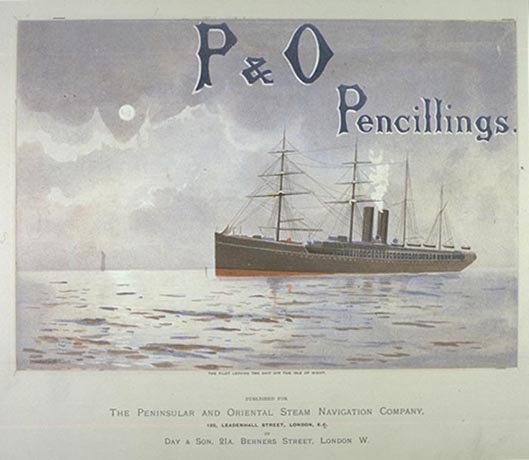
The original drawings bear the pencil markings of the lithographers, Day & Sons, and areas of ‘re-inking’ intended to deepen the contrast and tone of the plate. The lithographic plates were 2/3rds the size of the originals, but in all other respects Lloyd’s drawings were faithfully reproduced.
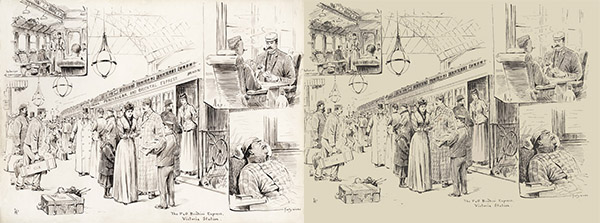
Spot the only difference!
In addition to the 16 in the album, a further 6 drawings, 24 colour plates and a map completed the published version of P&O Pencillings. The colour lithographs were individually mounted and reproduced from original watercolours, which remained with the artist’s family and are today in a private collection.
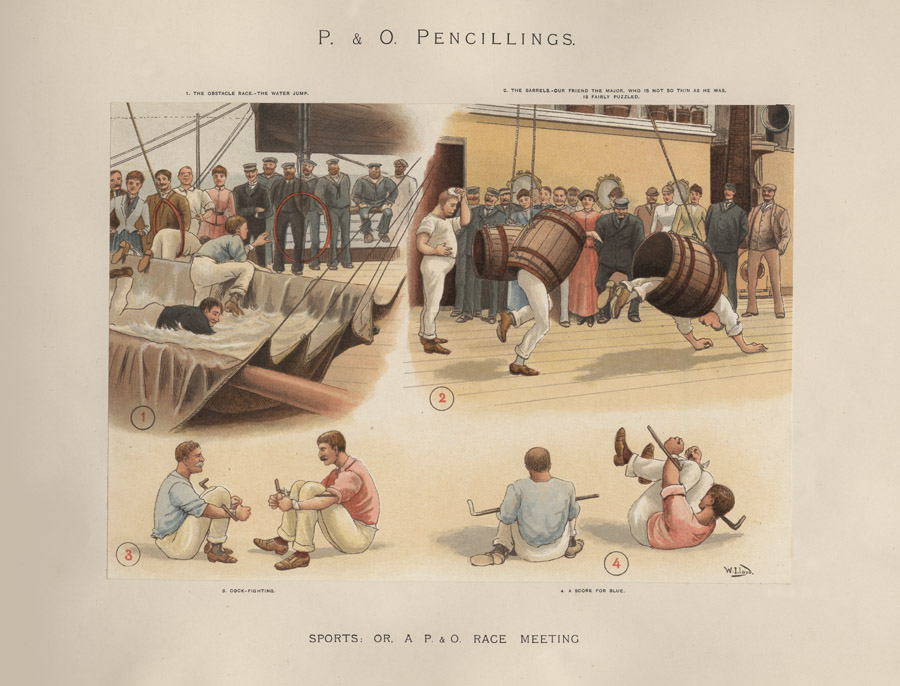
Colour was key to the appeal of P&O Pencillings and its promotional advantage. It was an antidote to the large albums of black and white photographs which were shown to prospective passengers in the Company’s booking office. Although informative, the photographs were entirely devoid of people and any sense of life on board.
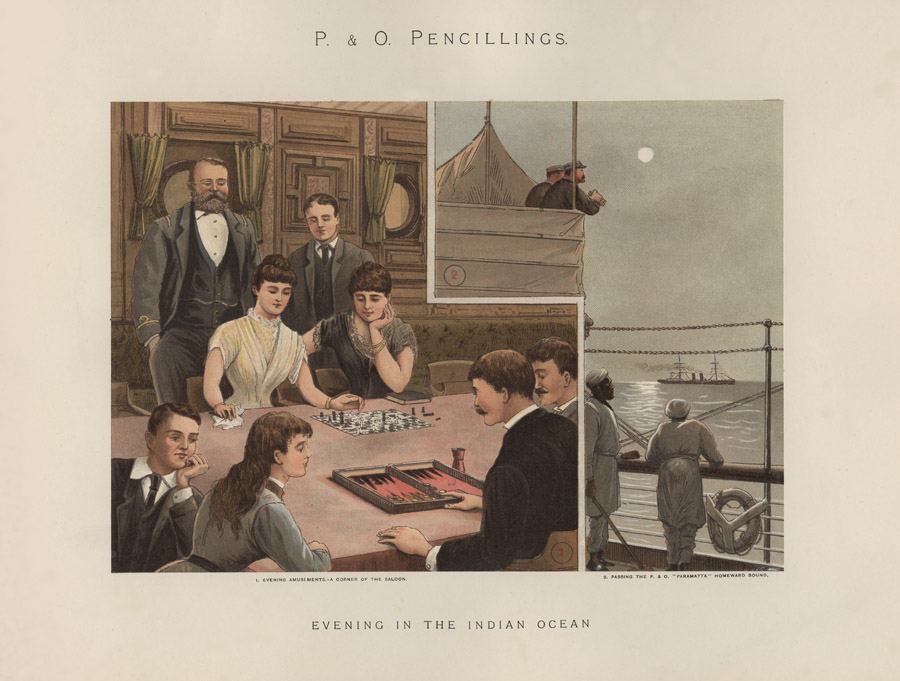
Colour or chromo lithography offered new possibilities for advertising and promotion in the form of colourful posters, brochures, postcards and even magic lantern slides.
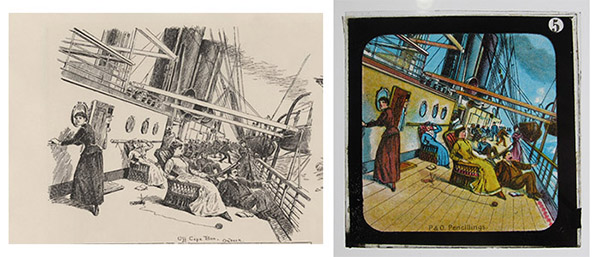
P&O Pencillings appeared in a set of 12 lantern slides. (Ref: AC/07935/00)
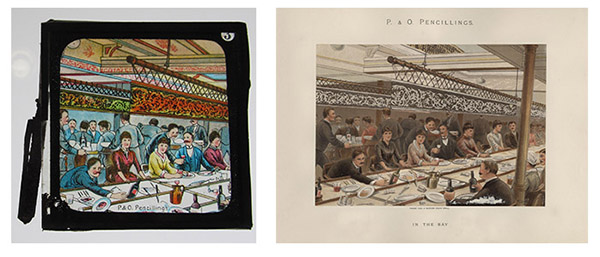
The popularity and appeal of P&O Pencillings has endured. 30 years ago P&O re-published the book in a facsimile edition to celebrate the Company’s 150th Anniversary. Since then P&O Pencillings has appeared on menu covers, products and prints.
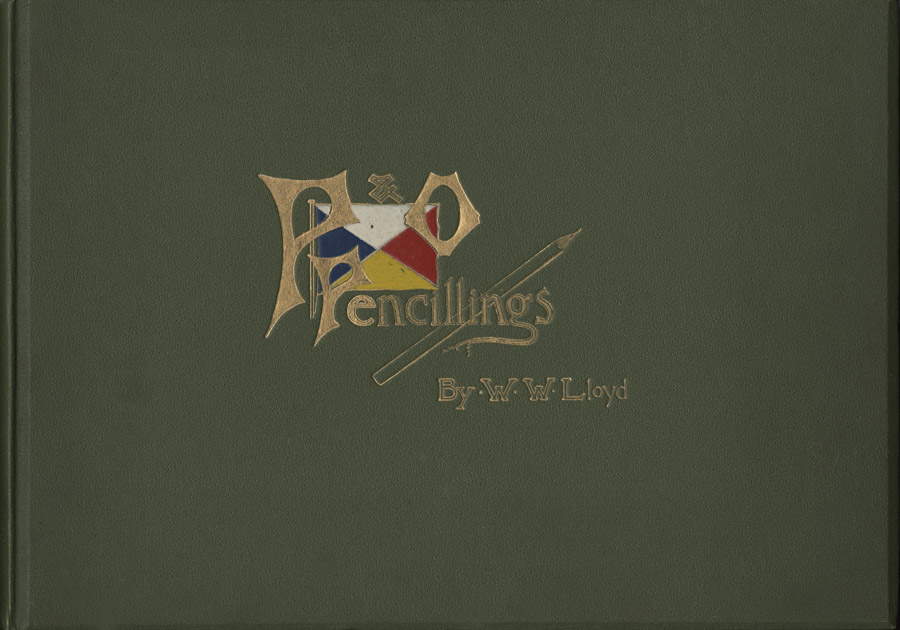
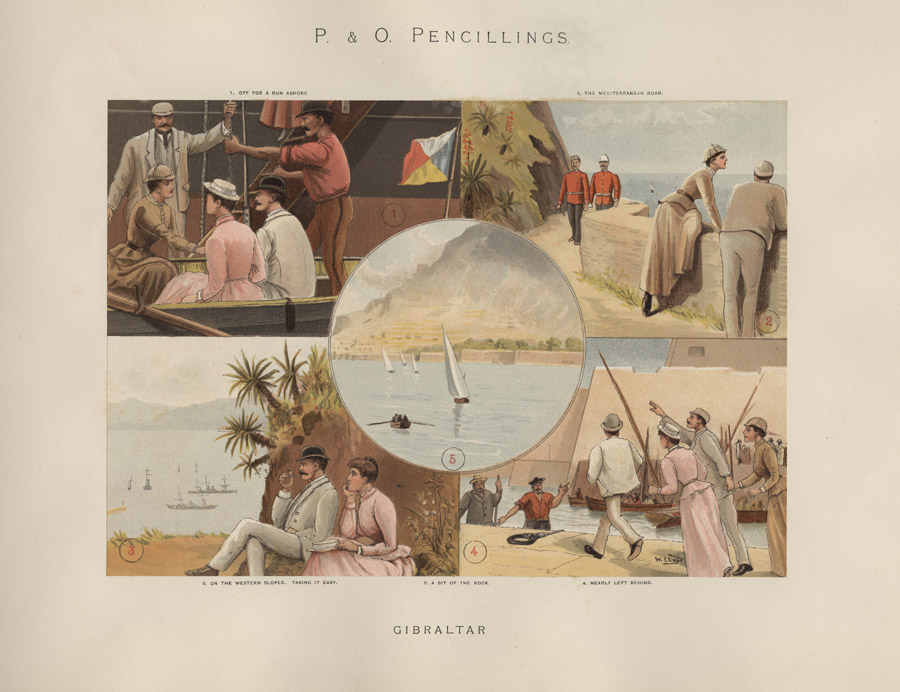
As a historical record of life on board P&O Pencillings continues to fascinate and inform. Today our copy of P&O Pencillings above (AC/02169/00) can be seen in a major exhibition on Ocean Liners organised by V&A and Peabody Essex Museum (PEM), Salem and currently on show at PEM until October 2017.
About W. W. Lloyd
William Whitelocke Lloyd was born in 1856 in Co. Waterford, Ireland. Educated first in Ireland and then at Eton, Lloyd went up to Magdalen College in Oxford, where he proved ill-suited to academia and was sent down in 1876.
Aged 22, Lloyd set upon a new career path and took up a commission as Second Lieutenant to the 1st Battalion, 24th Regiment of Foot then stationed in South Africa. So in 1878 Lloyd boarded RMS Balmoral Castle for the passage to Cape Town making a number of sketches and watercolours as aide memoirs along the way.
As the Frontier War in the Eastern Cape drew to a close, Lloyd’s Battalion moved to the British Colony of Natal where they were engaged in the Zulu Wars of 1879. Again Lloyd sought to document his experiences in drawings and watercolours, creating a unique historical record of a young soldier’s observations, which was published in “On Active Service” in 1890. Returning to England at the end of 1879, Lloyd remained with his regiment until 1882, when he resigned from active service and returned to Ireland.
By this date Lloyd had followed his father in taking the additional family name of Whitelocke (from the maternal line) his first publications bearing the name ‘W.W. Lloyd’.
W.W. Lloyd & P&O
Exactly when Lloyd came to the notice of P&O is unclear. However in 1890 he published a travelogue - “LLoyd’s Sketches of Indian Life” and a brief note in the P&O Board minutes for the same year records the purchase of a book by W.W. Lloyd.
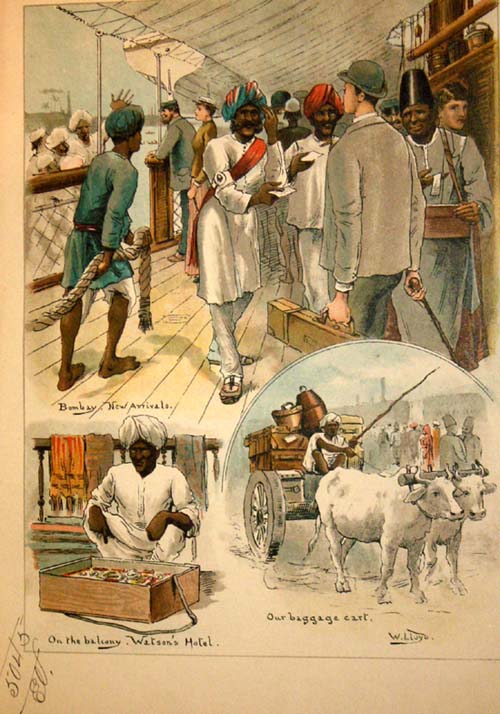

Certainly by 1891 Lloyd had produced two significant paintings for the Company, commemorating the part played by P&O ships in the Crimean war, which were proudly displayed in the P&O Pavilion at the Royal Naval Exhibition of the same year. The company also publicly exhibited the coloured plates from P&O Pencillings (mounted in frames) in 1892.
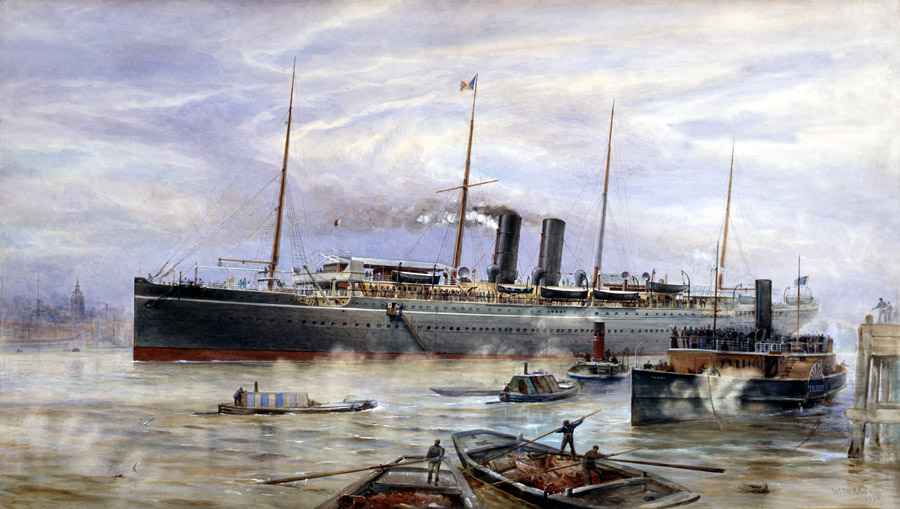
AC/03315/00
There were other commissions too including a large watercolour of P&O’s Himalaya, depicted in the Thames Estuary in the year of her launching (1892), and perhaps intended to hang in P&O's new office in Leadenhall Street. (Ref: AC/03315/00)
Lloyd travelled on board P&O's Mirzapore, Britannia and Arcadia, producing smaller watercolours of the Company steamers in the ports of Aden, Brindisi and Valetta.
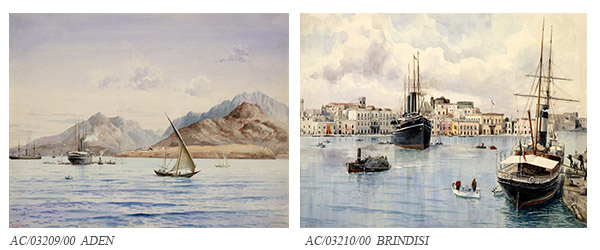
The P&O Pocket book of 1900 featured a number of Lloyd’s paintings including Aden and Brindisi above.
Doubtless there would have been many more P&O commissions had Lloyd not died suddenly in 1897, at the age of 41.
In his short lifetime Lloyd had made his mark and published four books, each combining his skills of observation and draughtmanship with a wry wit and enduring sense of fun.
Today P&O Pencillings is perhaps his best known book - a fitting and firm favourite that has stood the test of time and tide.
Visit our gallery to see P&O Pencillings in full.




